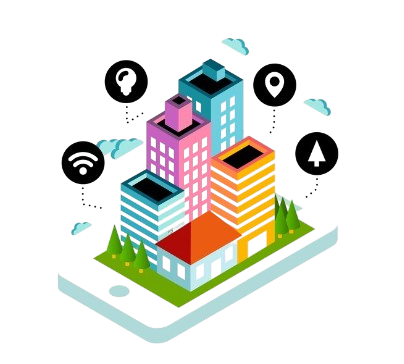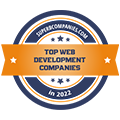The integration of IoT in Smart Cities is revolutionizing urban living, offering innovative solutions to enhance infrastructure, public safety, and sustainability. While there are significant challenges to overcome, such as data privacy, interoperability, and cost, the potential benefits of IoT in Smart Cities are immense. As technology continues to advance, the future of smart cities looks promising, with IoT playing a central role in creating more efficient, sustainable, and livable urban environments.
The concept of smart cities is rapidly becoming a reality, with IoT (Internet of Things) playing a pivotal role in their development. As urbanization continues to increase, cities are facing unprecedented challenges in terms of sustainability, efficiency, and quality of life. The integration of IoT in Smart Cities is not only transforming the way cities operate but also offering innovative solutions to complex urban problems. This blog post explores the innovations and challenges associated with IoT in Smart Cities.
The Rise of IoT in Smart Cities
-
Enhancing Urban Infrastructure
One of the primary applications of IoT in Smart Cities is the enhancement of urban infrastructure. Smart sensors and devices are being deployed across cities to monitor and manage various aspects of urban life, such as traffic flow, energy consumption, and waste management. These IoT devices collect real-time data, allowing city authorities to make informed decisions and optimize the use of resources.
For example, smart traffic lights can adjust their timings based on real-time traffic conditions, reducing congestion and improving the flow of vehicles. Similarly, smart grids can monitor and manage energy consumption, leading to more efficient use of electricity and reducing the strain on power plants.
-
Improving Public Safety and Security
Public safety and security are paramount concerns for any city. IoT in Smart Cities offers innovative solutions to enhance security and emergency response. Smart surveillance cameras equipped with AI can detect unusual activities and alert authorities in real time. Additionally, IoT-enabled emergency response systems can provide quicker and more efficient assistance during natural disasters or other emergencies.

-
Environmental Monitoring and Sustainability
Sustainability is a critical aspect of smart city development. IoT in Smart Cities enables continuous monitoring of environmental conditions, such as air quality, noise levels, and water quality. By analyzing this data, city authorities can implement measures to reduce pollution and promote a healthier environment for residents.
For instance, smart sensors can detect harmful pollutants in the air and trigger actions to mitigate their impact. IoT devices can also monitor water usage and detect leaks in real time, reducing water wastage and conserving this precious resource.
Challenges in Implementing IoT in Smart Cities
-
Data Privacy and Security Concerns
While the Internet of Things in Smart Cities offers numerous benefits, it also raises significant data privacy and security concerns. The vast amount of data collected by IoT devices can be vulnerable to cyberattacks and unauthorized access. Ensuring the security of this data and protecting the privacy of citizens is a major challenge for smart city initiatives.
City authorities and technology providers must implement robust security measures, such as encryption and secure authentication, to safeguard data. Additionally, clear policies and regulations need to be established to address data privacy concerns and ensure that the data is used ethically and responsibly.
-
Interoperability and Integration
Another challenge in implementing the Internet of Things in Smart Cities is the interoperability and integration of different IoT devices and systems. Cities often deploy IoT solutions from multiple vendors, leading to compatibility issues and difficulties in integrating these systems. Without seamless interoperability, the full potential of IoT in Smart Cities cannot be realized.
To address this challenge, standardization of IoT protocols and open-source platforms is essential. By adopting common standards, cities can ensure that IoT devices from different vendors can communicate and work together effectively.
-
Cost and Infrastructure Requirements
Deploying the Internet of Things in Smart Cities requires significant investment in infrastructure and technology. The cost of installing and maintaining IoT devices, as well as upgrading existing infrastructure, can be a major barrier for many cities. Additionally, the availability of reliable and high-speed internet connectivity is crucial for the successful implementation of IoT solutions.
To overcome these challenges, public-private partnerships can play a vital role. Collaboration between city authorities, technology providers, and other stakeholders can help share the costs and resources required for smart city projects.
The Future of IoT in Smart Cities
-
Advancements in Technology
As technology continues to evolve, the capabilities of Internet of Things in Smart Cities will also advance. The integration of artificial intelligence (AI) and machine learning with IoT will enable more sophisticated data analysis and decision-making processes. For example, predictive analytics can be used to anticipate and prevent potential issues, such as traffic congestion or energy shortages, before they occur.
-
Citizen Engagement and Participation
The success of the Internet of Things in Smart Cities also depends on the engagement and participation of citizens. Smart city initiatives should focus on creating platforms that allow residents to interact with and benefit from IoT solutions. For instance, mobile apps can provide real-time information on public transportation, air quality, and other services, empowering citizens to make informed decisions.
Moreover, involving citizens in the planning and implementation of smart city projects can foster a sense of ownership and ensure that the solutions meet the needs and preferences of the community.
Conclusion
The integration of IoT in Smart Cities is revolutionizing urban living, offering innovative solutions to enhance infrastructure, public safety, and sustainability. While there are significant challenges to overcome, such as data privacy, interoperability, and cost, the potential benefits of IoT in Smart Cities are immense. As technology continues to advance, the future of smart cities looks promising, with IoT playing a central role in creating more efficient, sustainable, and livable urban environments.
In these advancements, Tanbits, which offers IoT services, is at the forefront of helping cities navigate the complexities of implementing IoT solutions.
By leveraging the power of IoT in Smart Cities, we can create a better future for urban living, where technology and data work together to improve the quality of life for all residents. As we move forward, city authorities, technology providers, and citizens must collaborate and embrace the potential of IoT in Smart Cities. Together, we can build smarter, safer, and more sustainable cities for future generations.
BACK










